
Designated ranks in the United States Armed Forces serve to denote a clear leadership structure and chain of command within the various branches. During wartime, however, a higher chain of command is sometimes necessary, as a single military officer may be put in charge of air, land, and sea units during battle. (Read more about every rank in the U.S. Army.)
During World War II, some officers were also in command of troops from other countries. As American Army generals and Navy admirals became commanders of joint Allied forces, some found themselves in the awkward position of giving orders to officers of higher rank from other countries. Thus, five-star positions were created to give U.S. officers comparable ranks to five-star officers of other nations during multinational war operations.
To determine the highest ranking officers in U.S. history, 24/7 Wall St. reviewed five-star admirals and generals on VeteranAid.org as well as a few outlying positions that have been equivalent to or exceeded five-star ranks.
Fleet admiral is the five-star officer rank in the U.S. Navy, while general of the Army and general of the Air Force are the five-star equivalents in those respective branches. These positions are generally only awarded during wartime, although five-star officers retain their ranks and receive active-duty pay for the rest of their lives.
One historical position that surpasses five-star ranks is general of the Armies, which has only been awarded twice – to World War I General John J. Pershing and posthumously to George Washington. Another outlying position that was awarded to three Union generals after the Civil War is called general of the Army, which is distinct from the five-star rank created in 1944.
What all of these officers had in common was their skilled and successful leadership that led to victories great and small during some of the largest and bloodiest battles the U.S. has ever fought. Here are 50 of the most decorated war heroes in American history.
Click here to see the highest ranking officers in U.S. military history

George Washington (1732-1799)
> Rank: Commander in chief, general of the Armies
> Year of promotion: 1775, 1976
Before becoming the first president of the United States, military officer and statesman George Washington was appointed commander in chief of the Continental Army, a rank he held from 1775 until the conclusion of the Revolutionary War in 1783. In 1976, Congress posthumously promoted him to general of the Armies – the highest Army rank possible – for his service as the first commanding general of the U.S. Army.
[in-text-ad]
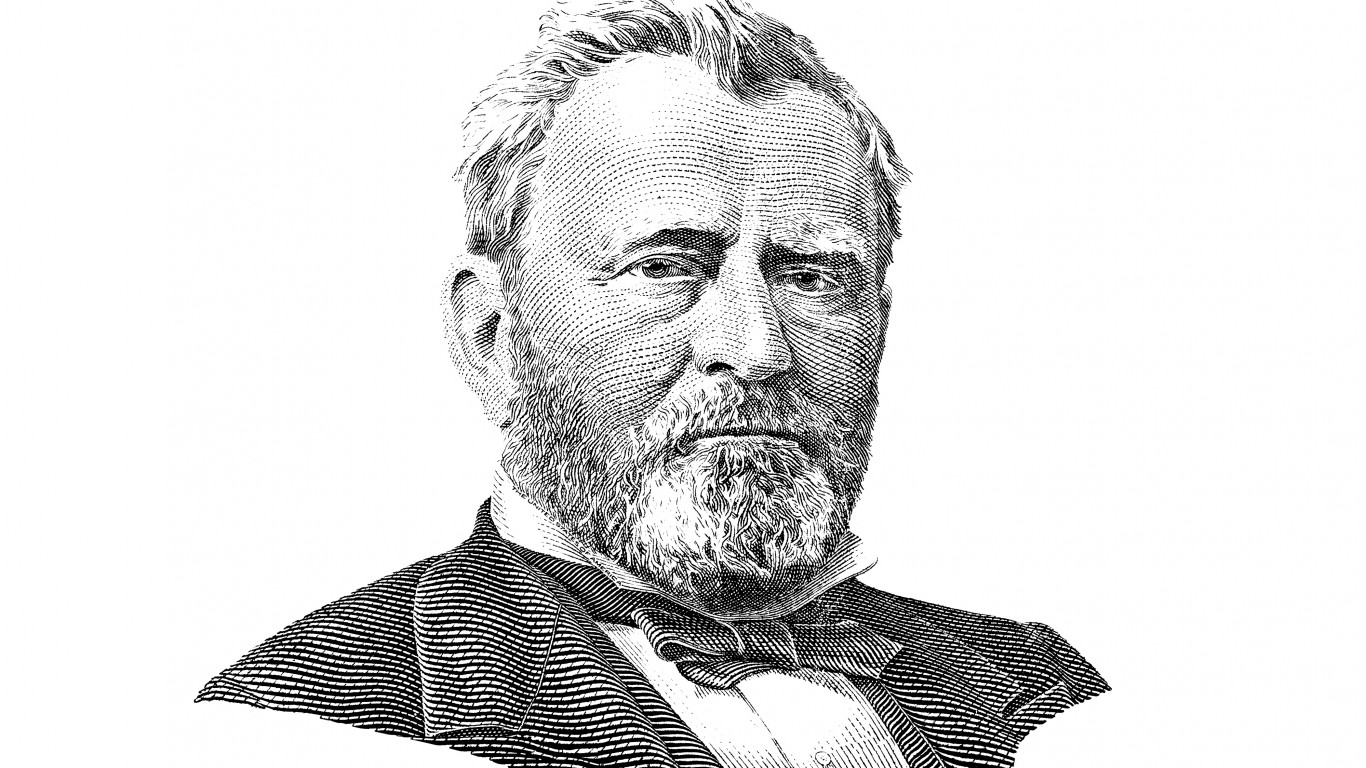
Ulysses S. Grant (1822-1885)
> Rank: General of the Army
> Year of promotion: 1866
On July 25, 1866, Congress promoted General Ulysses S. Grant to general of the Army for his command of the Union Army that led to victory in the Civil War. Although the rank carried only four stars at the time, a 1924 ruling determined that the rank was equivalent to the general of the Armies rank held by both George Washington and John J. Pershing.
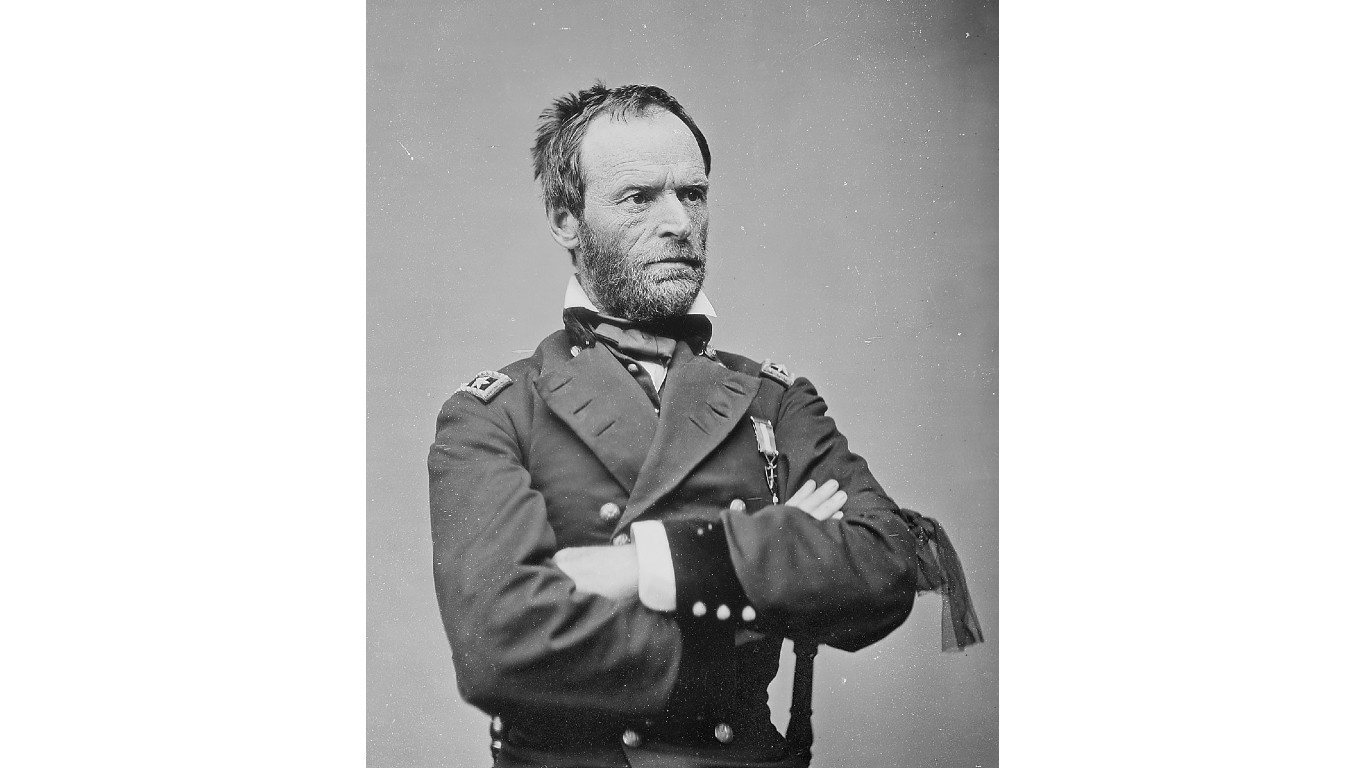
Wiliam Tecumseh Sherman (1820-1891)
> Rank: General of the Army
> Year of promotion: 1869
When Grant became president, he passed the role of general of the Army on to former Union Army General William T. Sherman. Although the rank bears the same name as the modern five-star rank of general of the Army, this post-Civil War era rank was distinct from the modern rank and only awarded to three people between 1866 and 1888.
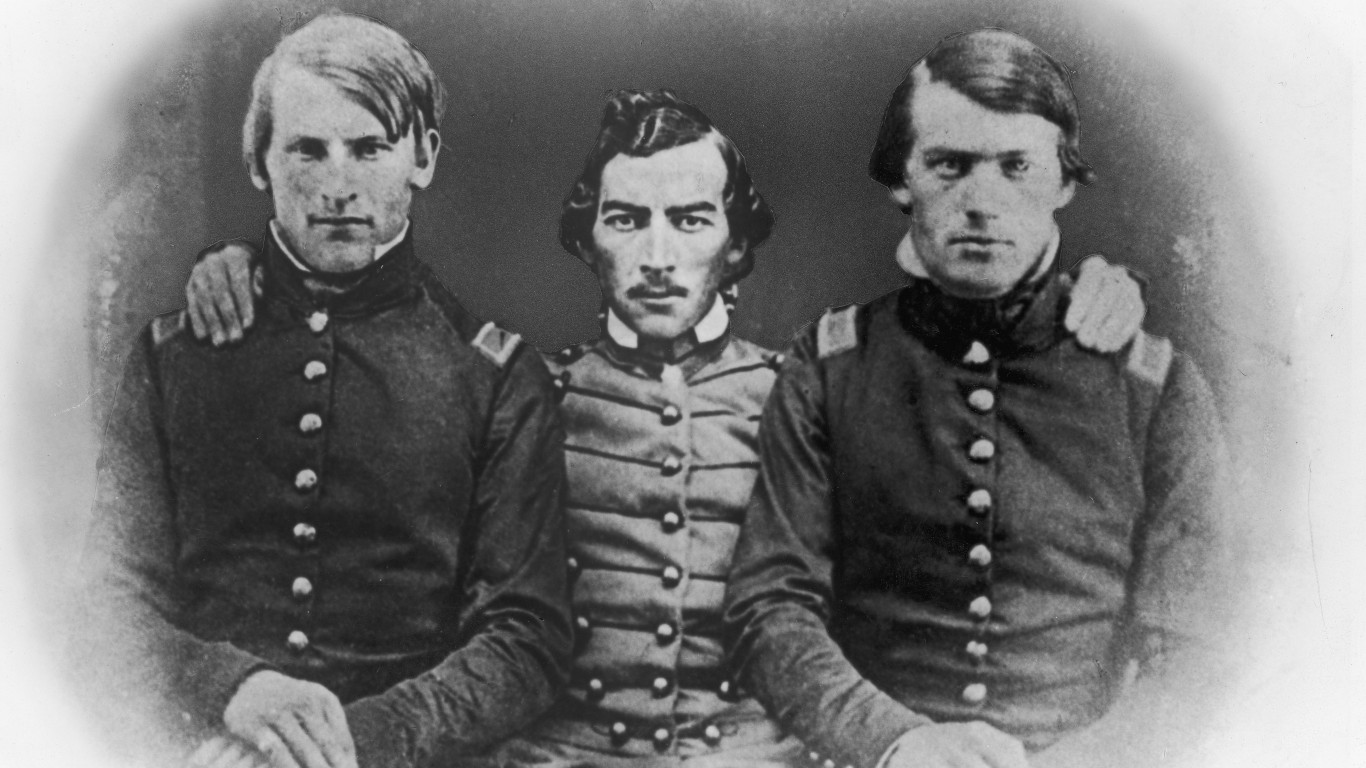
Philip Sheridan (1831-1888)
> Rank: General of the Army
> Year of promotion: 1888
While in ill health, former Union Army General Philip Sheridan became the last post-Civil War era general of the Army, a position he held for a few months until his death on Aug. 5, 1888. As opposed to the modern five-star general rank, the rank that Sheridan shared with Sherman and Grant could only be held by one officer at a time.
[in-text-ad-2]
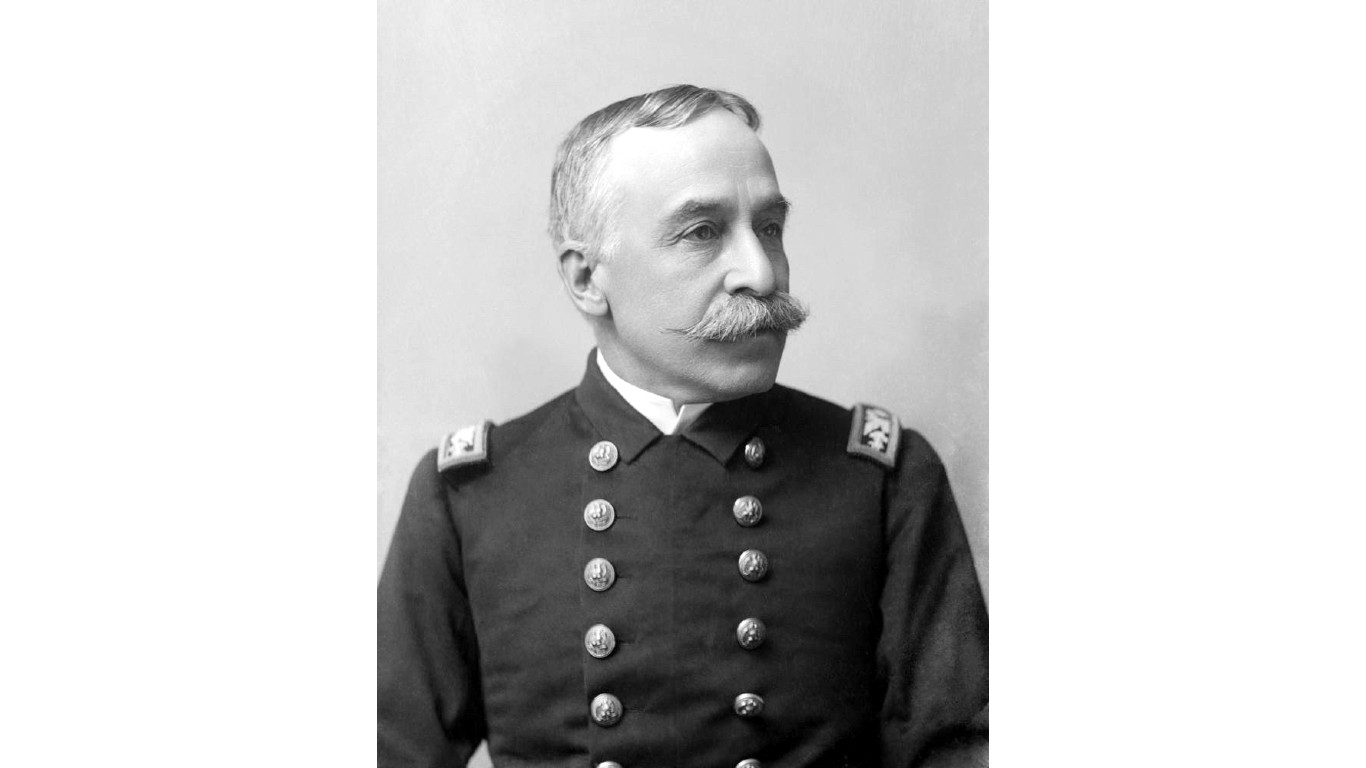
George Dewey (1837-1917)
> Rank: Admiral of the Navy
> Year of promotion: 1903
On March 24, 1903, Admiral George Dewey was promoted to admiral of the Navy (retroactive to March 2, 1899) in recognition of his victory at Manilla Bay during the Spanish American War. Dewey remains the only U.S. Navy officer ever awarded this title. Admiral of the Navy is generally considered equivalent to or senior to the five-star rank of fleet admiral.
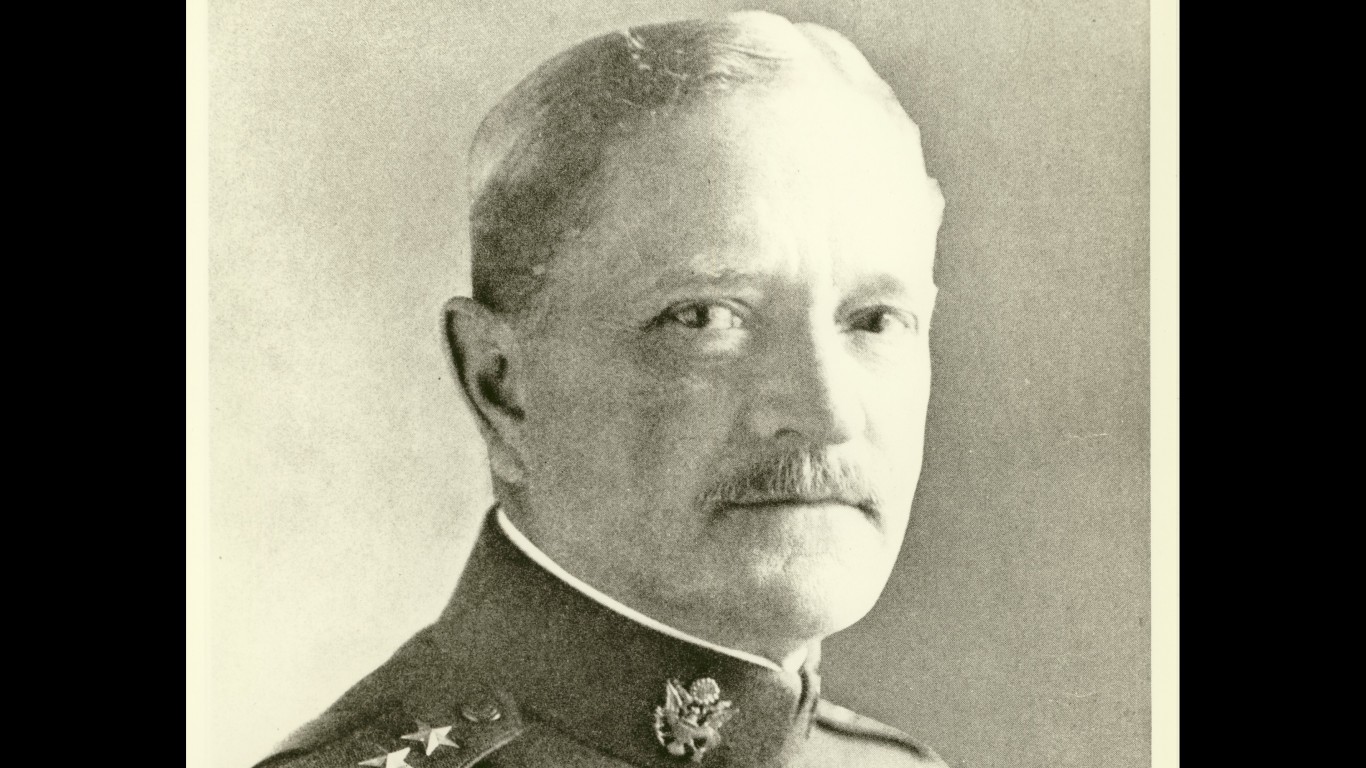
John Joseph Pershing (1860-1948)
> Rank: General of the Armies
> Year of promotion: 1919
Army General John J. Pershing was promoted in 1919 to general of the Armies, the most senior rank possible in the U.S. Army, for his leadership in the American Expeditionary Forces during World War I. Although the rank supersedes that of a five-star general, it has yet to be officially assigned six stars.
[in-text-ad]
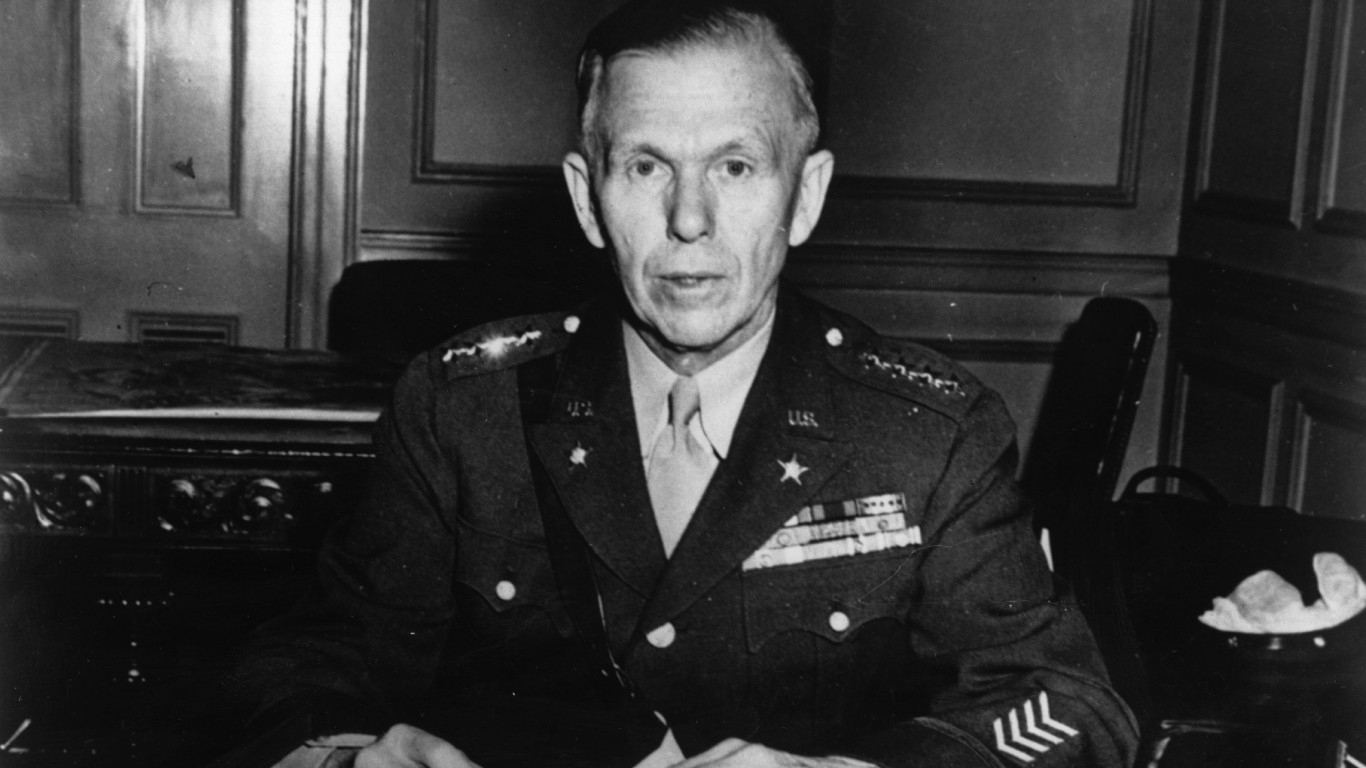
George Catlett Marshall (1880-1959)
> Rank: General of the Army
> Year of promotion: 1944
The first World War II general to be promoted to general of the Army was George C. Marshall, who was already serving as chief of staff of the U.S. Army. He would later become the U.S. secretary of defense and the U.S. secretary of state. Marshall is remembered for facilitating the Allied victory during the war and for his organization of post-war aid to Western Europe.

Douglas MacArthur (1880-1964)
> Rank: General of the Army
> Year of promotion: 1944
Known for his leadership in the Pacific theater of World War II, General Douglas MacArthur was the field marshal of the Philippine Army and the military advisor to the commonwealth government of the Philippines. He was promoted to general of the Army on Dec. 18, 1944, and oversaw the Allied occupation of Japan after its surrender in 1945.
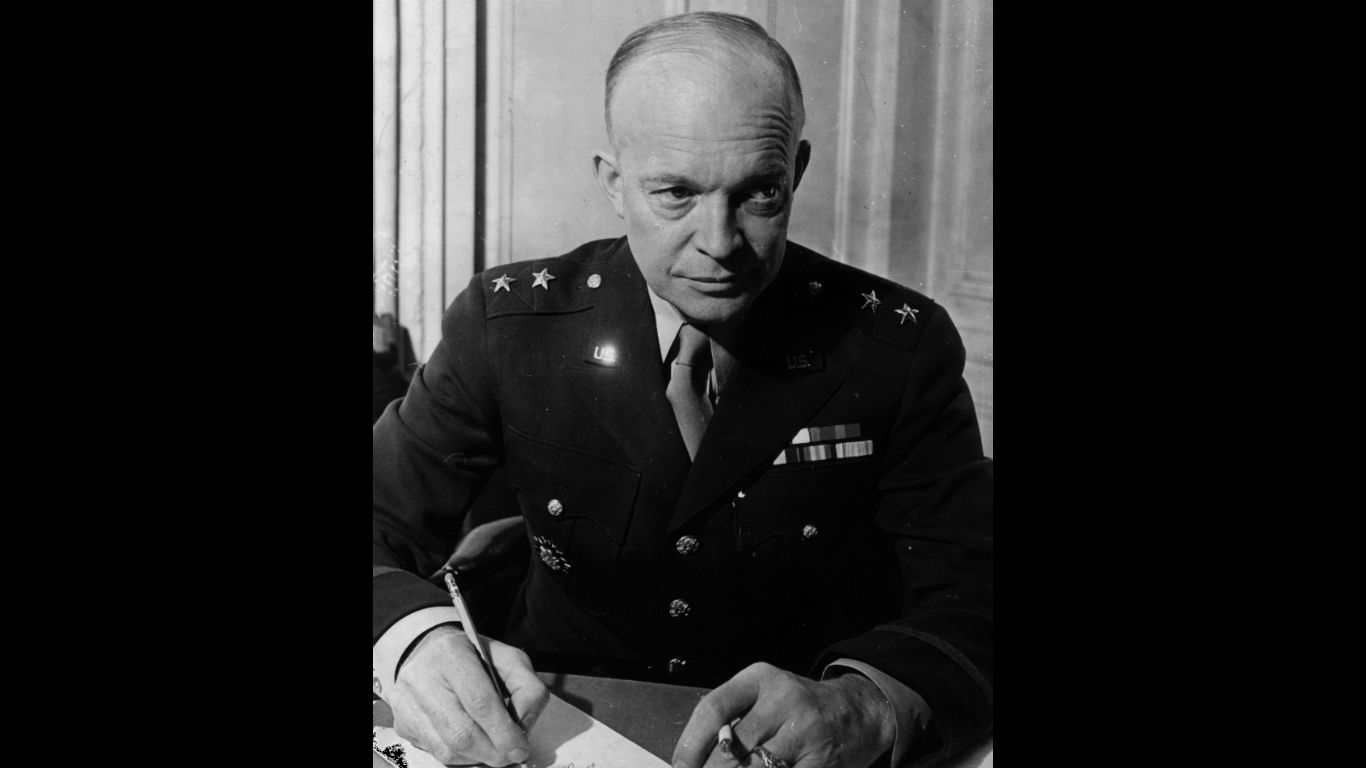
Dwight David Eisenhower (1890-1969)
> Rank: General of the Army
> Year of promotion: 1944
During World War II, Dwight D. Eisenhower served as supreme commander of the Allied Expeditionary Force in Europe, leading both the invasion of North Africa (Operation Torch) and the invasion of Normandy (Operation Overlord). He was promoted to general of the Army on Dec. 20, 1944, and is remembered as the architect of D-Day who would later become the 34th president of the United States.
[in-text-ad-2]
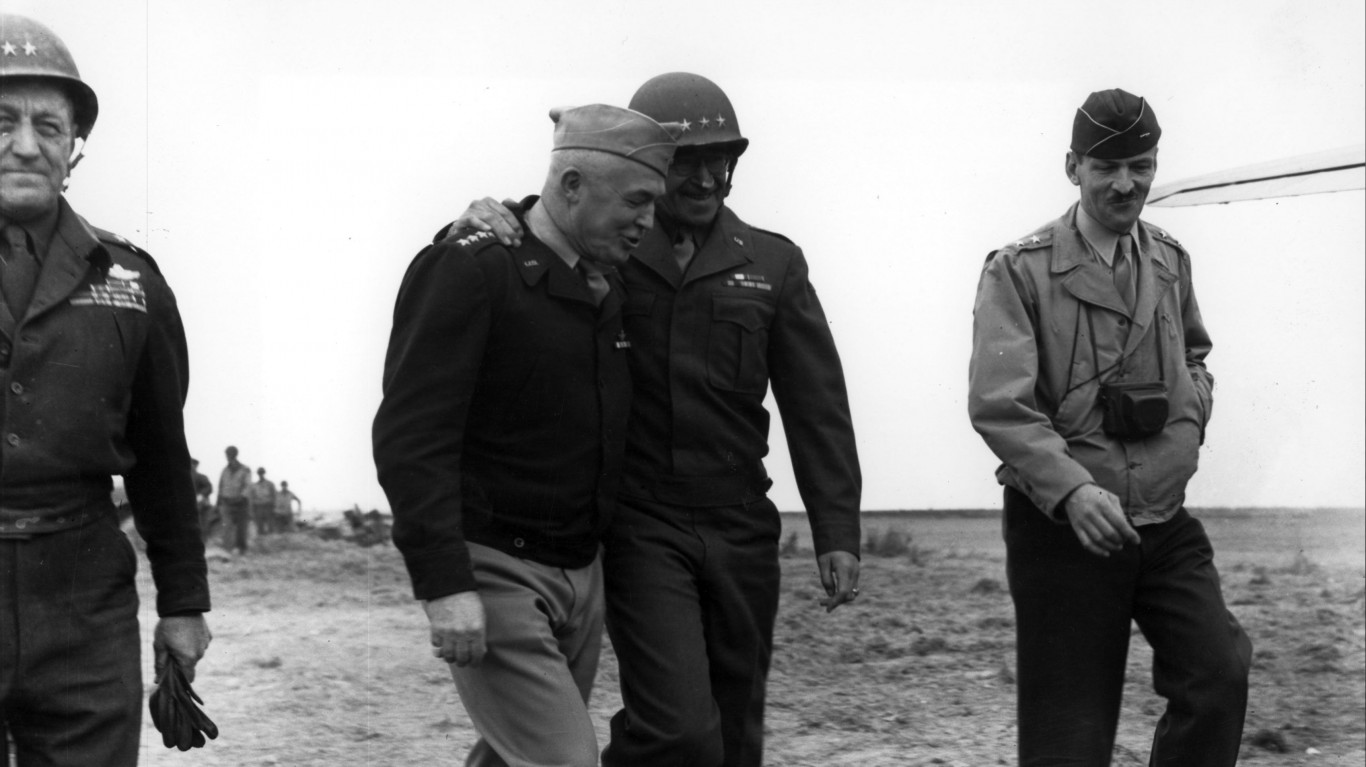
Henry Harley Arnold (1886-1950)
> Rank: General of the Army, general of the Air Force
> Year of promotion: 1944, 1949
An aviation pioneer, Henry H. Arnold was chief of the U.S. Army Air Corps, then became head of the Army Air Forces during World War II before being promoted to general of the Army. He is the only officer ever to hold five star ranks in two branches of the U.S. Armed Forces as well as the only person to ever hold the position of general of the Air Force, which he gained in 1949.
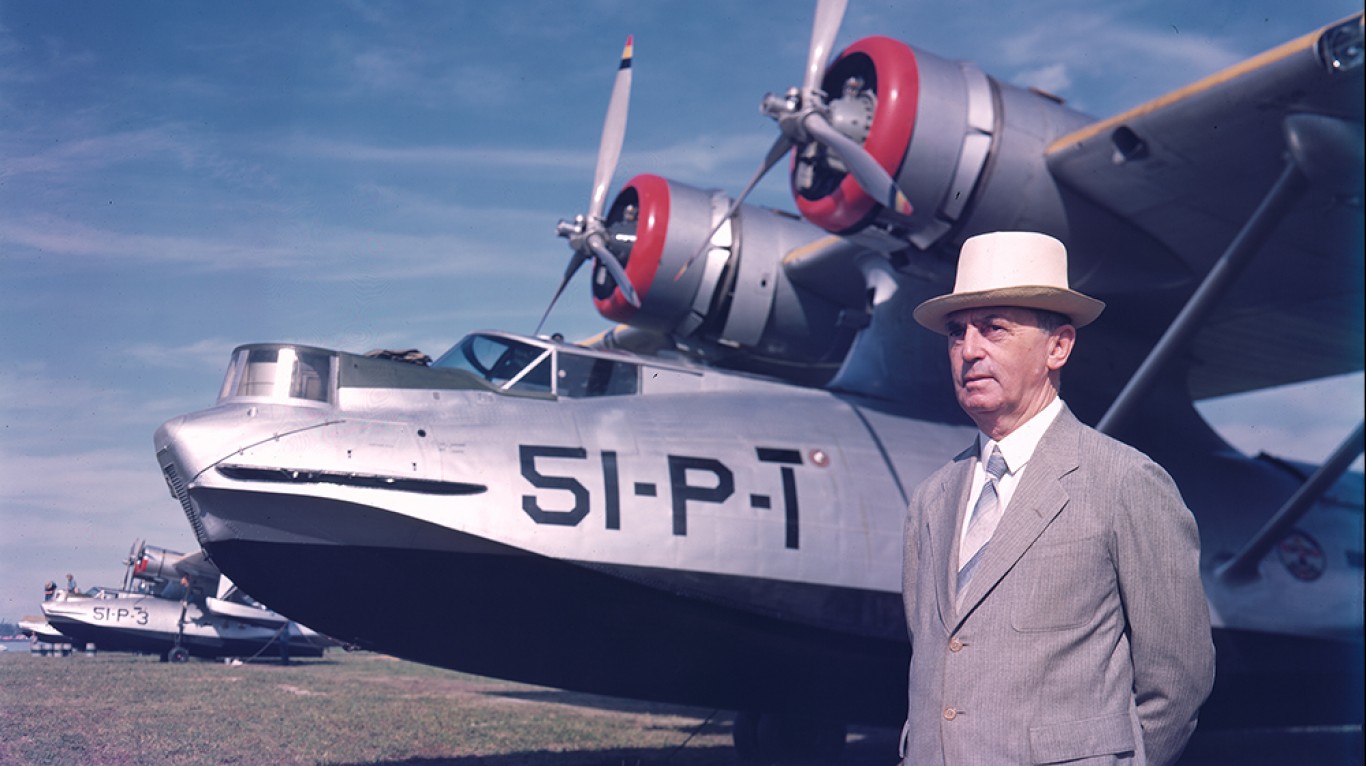
William Daniel Leahy (1875-1959)
> Rank: Fleet admiral
> Year of promotion: 1944
The first U.S. Navy officer to officially hold a five-star rank, WIlliam D. Leahy was the senior-most military officer on duty during World War II, serving as the chairman of the joint chiefs of staff, and advisor to the president. He became a five-star fleet admiral on Dec. 15, 1944, and was a major decision maker during World War II.
[in-text-ad]

Ernest Joseph King (1878-1956)
> Rank: Fleet admiral
> Year of promotion: 1944
After the Japanese attack on Pearl Harbor, naval officer Ernest King became commander in chief of the United States Fleet. He then served as chief of naval operations during World War II and was second in command under William Leahy. King was promoted to fleet admiral on Dec. 17, 1944, and retired a year later, leaving Chester Nimitz in command.
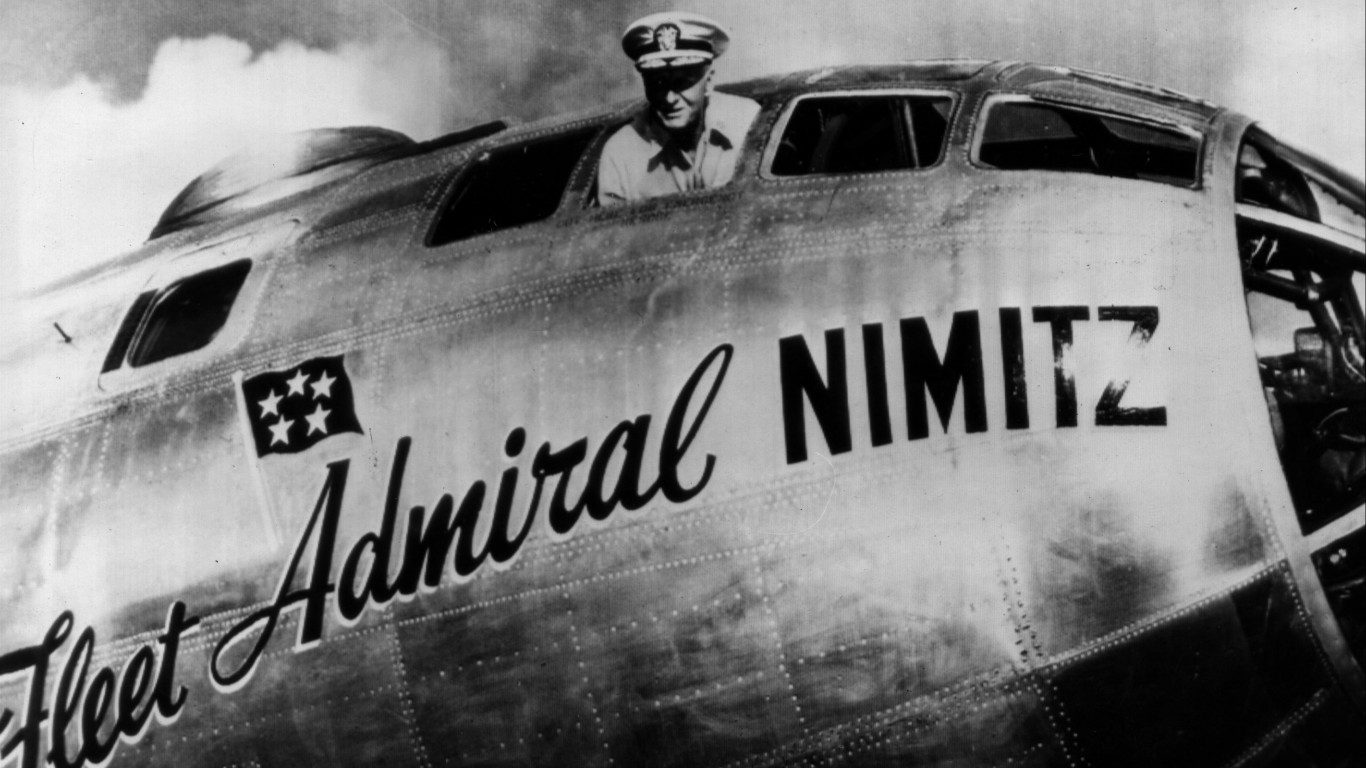
Chester William Nimitz (1885-1966)
> Rank: Fleet admiral
> Year of promotion: 1944
As a leading authority on submarines, naval officer Chester Nimitz served not only as the commander in chief of the U.S. Pacific Fleet during World War II, but also the commander of all Allied air, land, and sea forces in the Pacific theater. He was promoted to fleet admiral on Dec. 19, 1944, and served as chief of naval operations from 1945 to 1947.
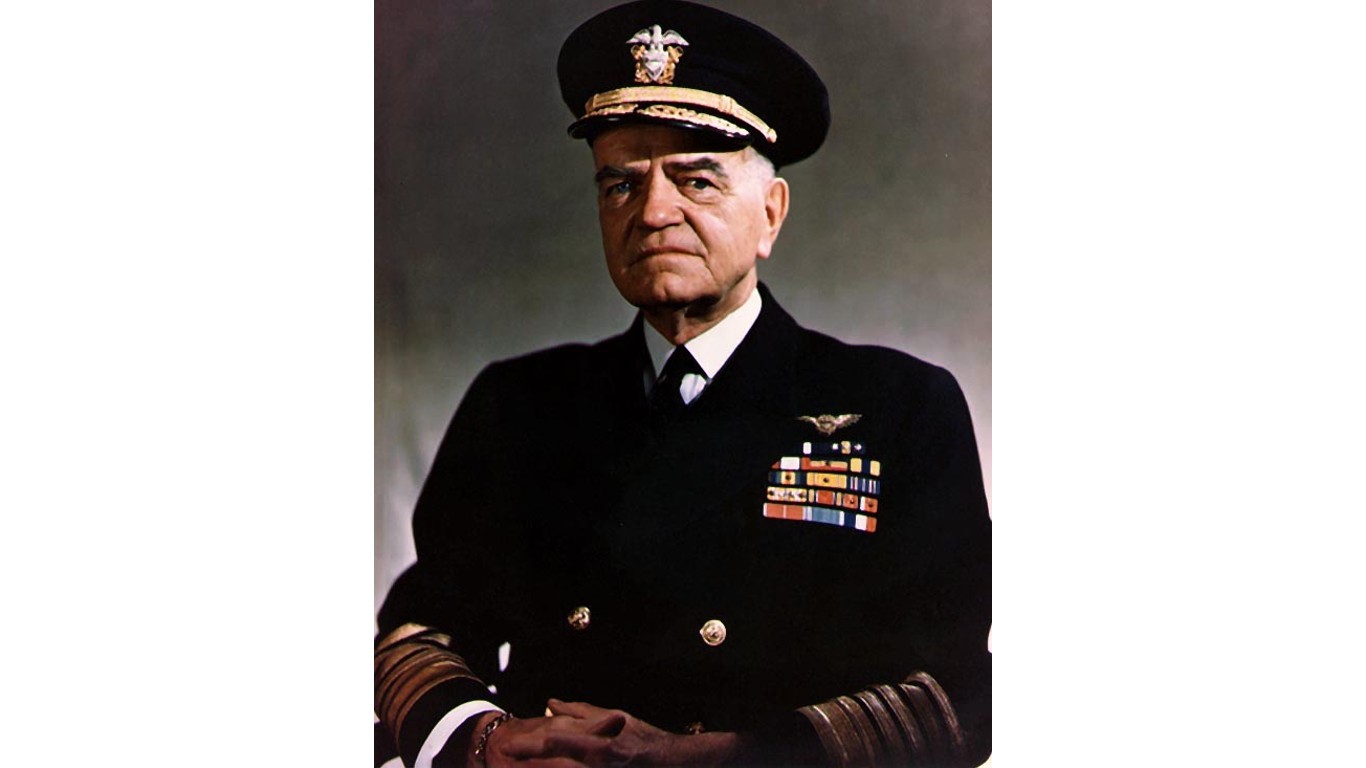
William Frederick Halsey Jr. (1882-1959)
> Rank: Fleet admiral
> Year of promotion: 1945
Having commanded a destroyer and an aircraft carrier during World War I, William Halsey Jr. became commander of the South Pacific area during World War II under Fleet Admiral Chester Nimitz. Halsey led Allied forces during the Battle of Guadalcanal and commanded the Third Fleet during the Battle of Leyte Gulf, one of the largest naval battles in history. He became the last officer to be promoted to fleet admiral on Dec. 11, 1945.
[in-text-ad-2]
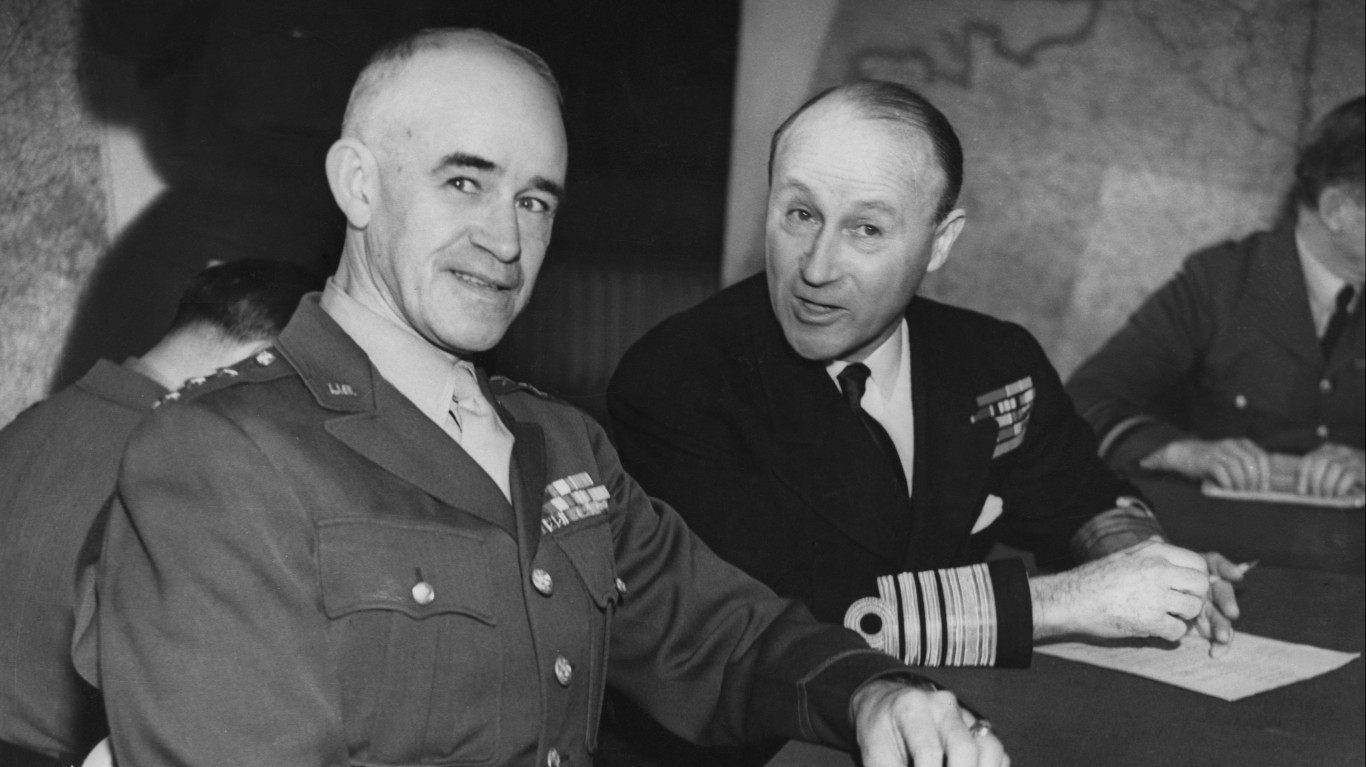
Omar Nelson Bradley (1893-1981)
> Rank: General of the Army
> Year of promotion: 1950
Omar Bradley served as the commander of the Twelfth U.S. Army Group – the largest Army formation ever to serve under one field commander – during World War II, then went on to become chief of staff of the U.S. Army before he was promoted to general of the Army after the start of the Korean War. He remains the last individual appointed to a five-star position in the U.S. Armed forces.
100 Million Americans Are Missing This Crucial Retirement Tool
The thought of burdening your family with a financial disaster is most Americans’ nightmare. However, recent studies show that over 100 million Americans still don’t have proper life insurance in the event they pass away.
Life insurance can bring peace of mind – ensuring your loved ones are safeguarded against unforeseen expenses and debts. With premiums often lower than expected and a variety of plans tailored to different life stages and health conditions, securing a policy is more accessible than ever.
A quick, no-obligation quote can provide valuable insight into what’s available and what might best suit your family’s needs. Life insurance is a simple step you can take today to help secure peace of mind for your loved ones tomorrow.
Click here to learn how to get a quote in just a few minutes.
Thank you for reading! Have some feedback for us?
Contact the 24/7 Wall St. editorial team.
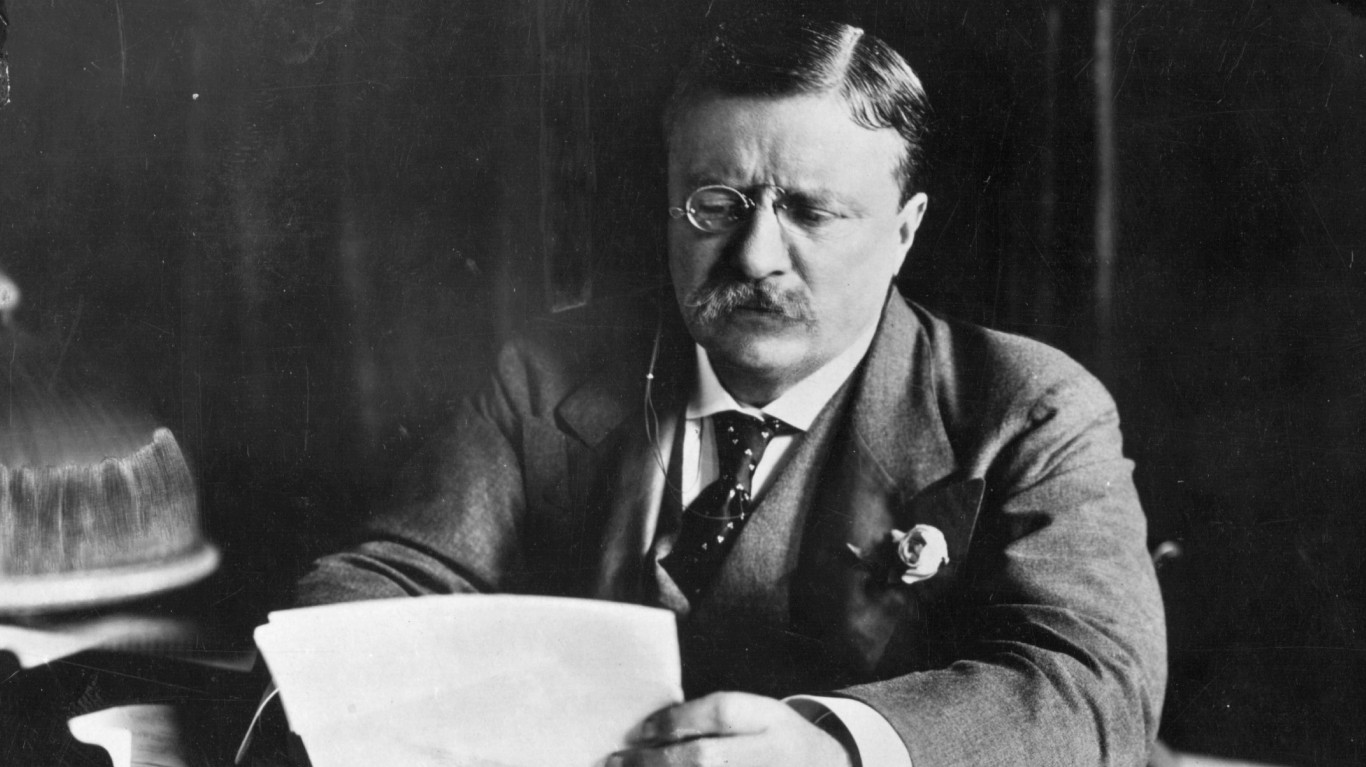 24/7 Wall St.
24/7 Wall St.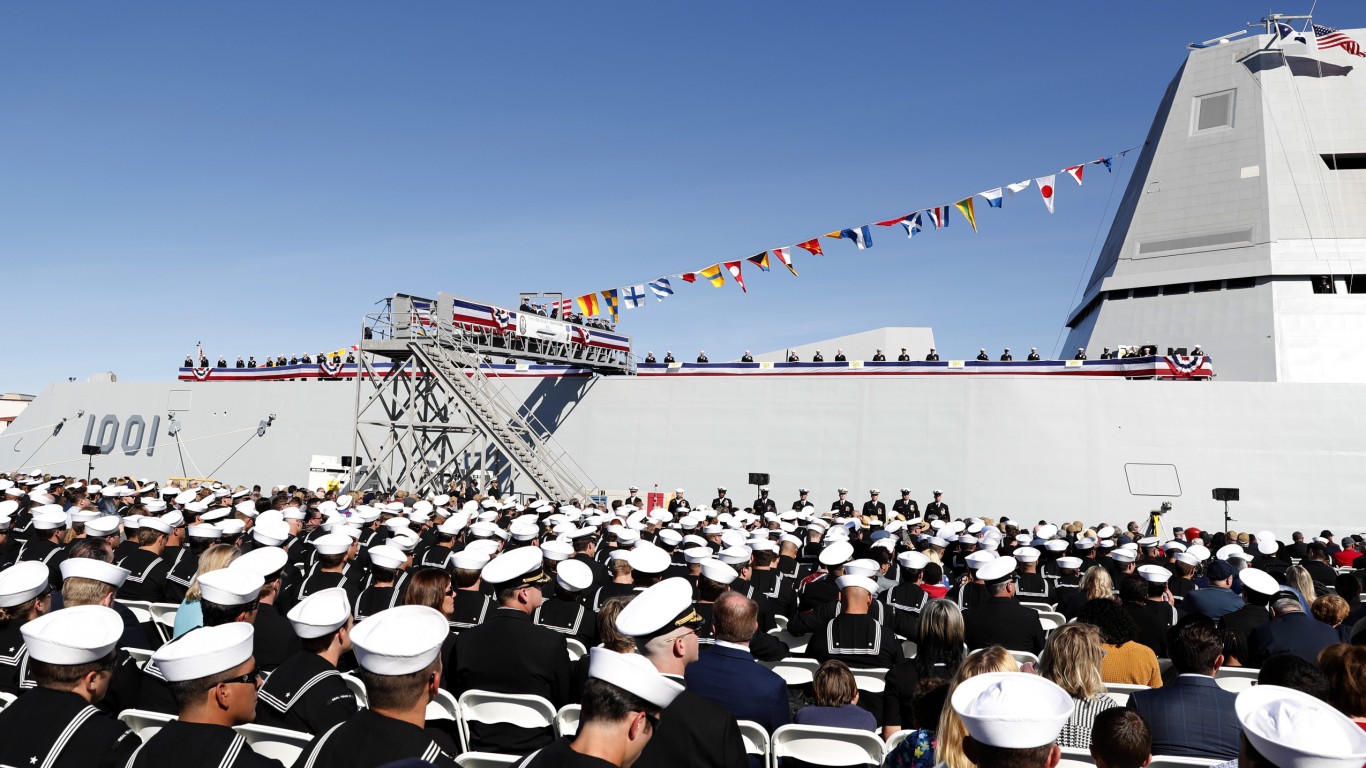 24/7 Wall St.
24/7 Wall St.